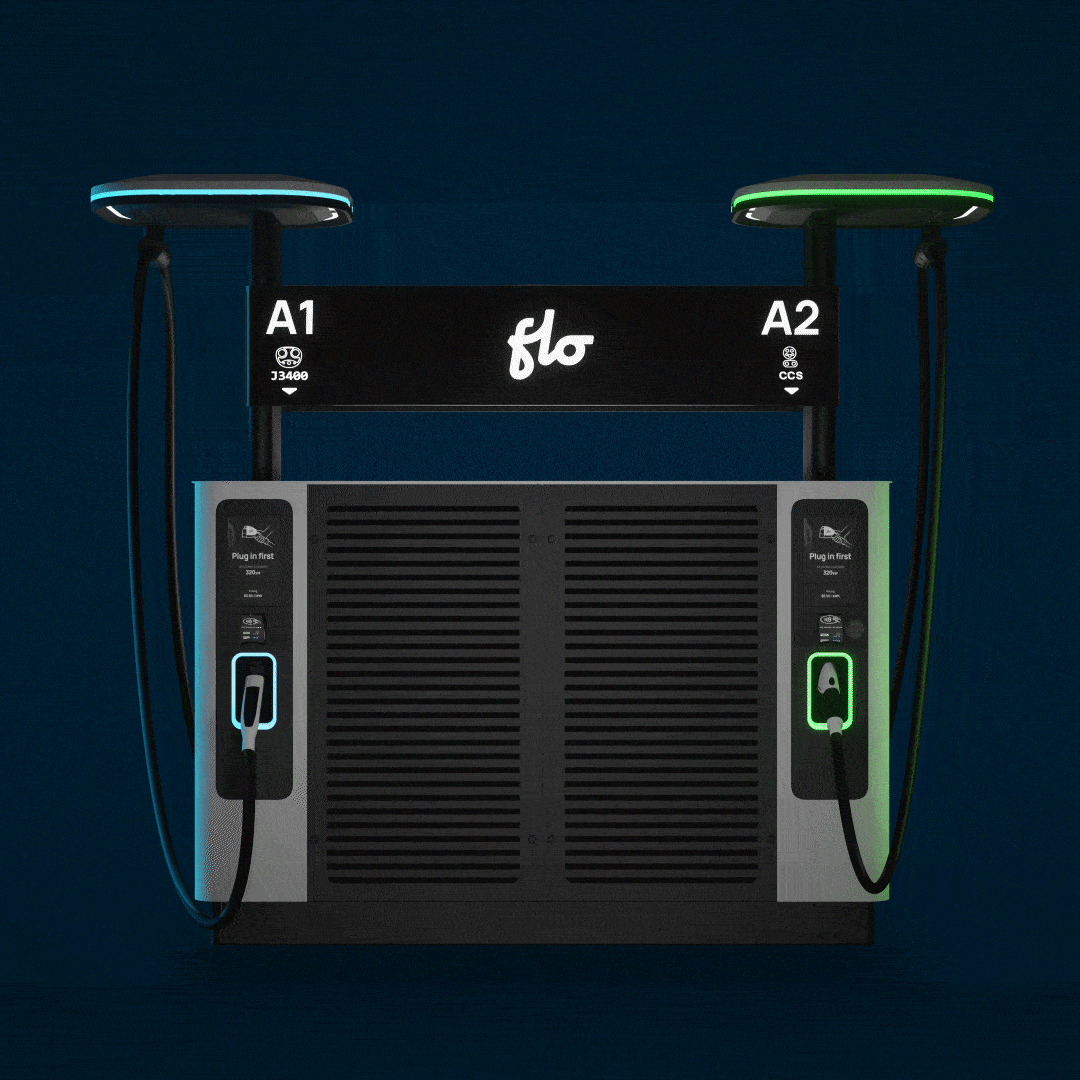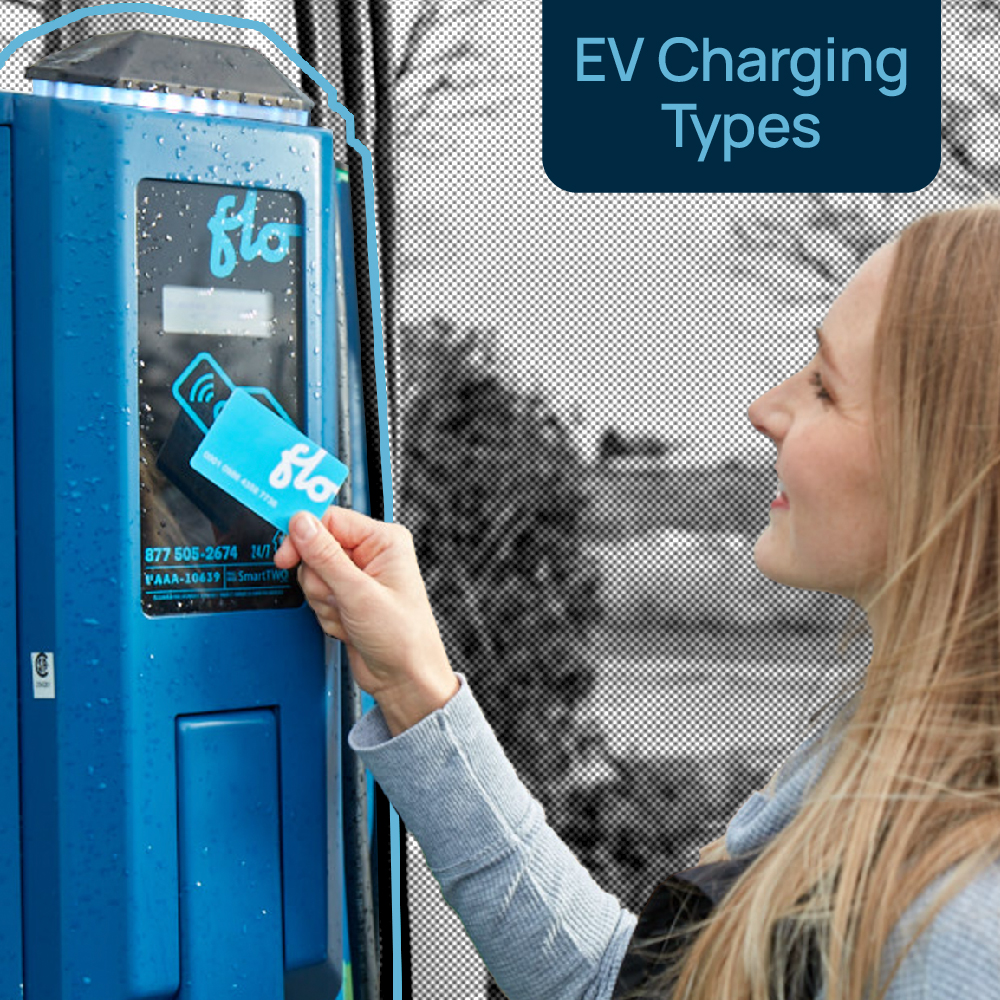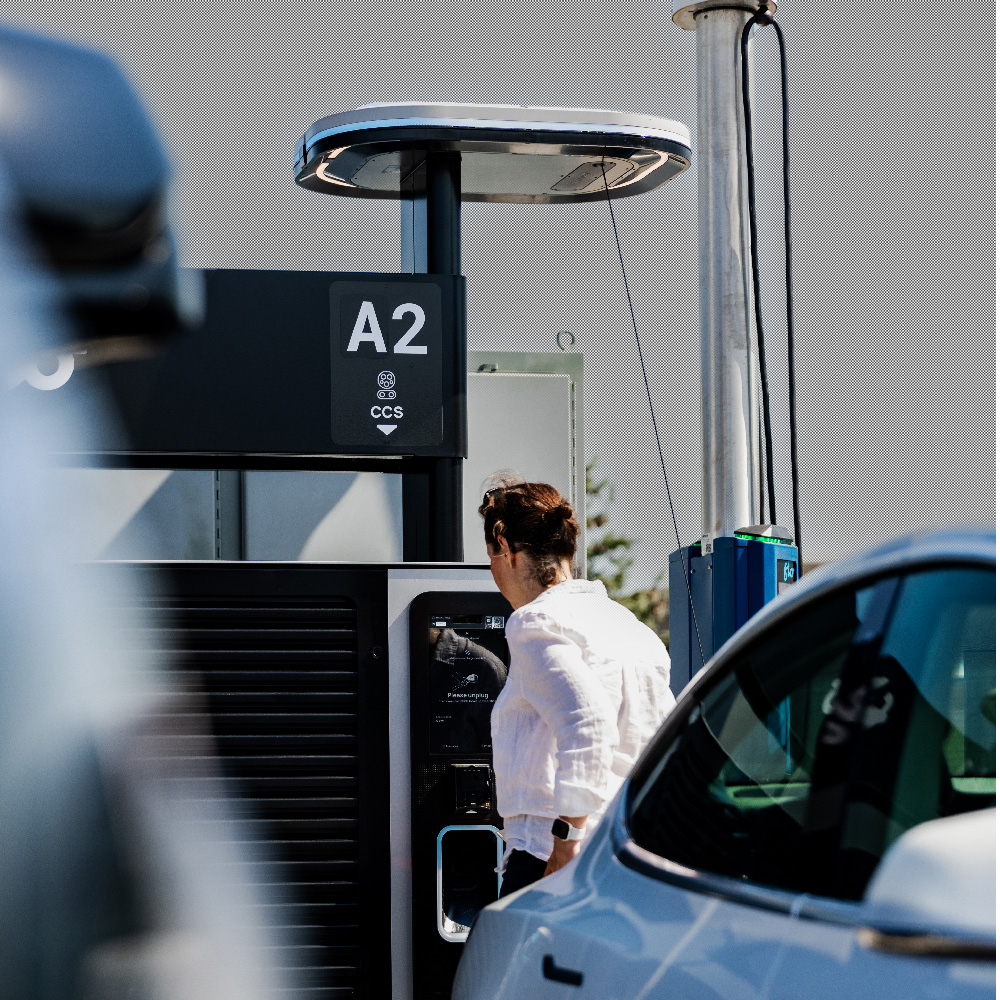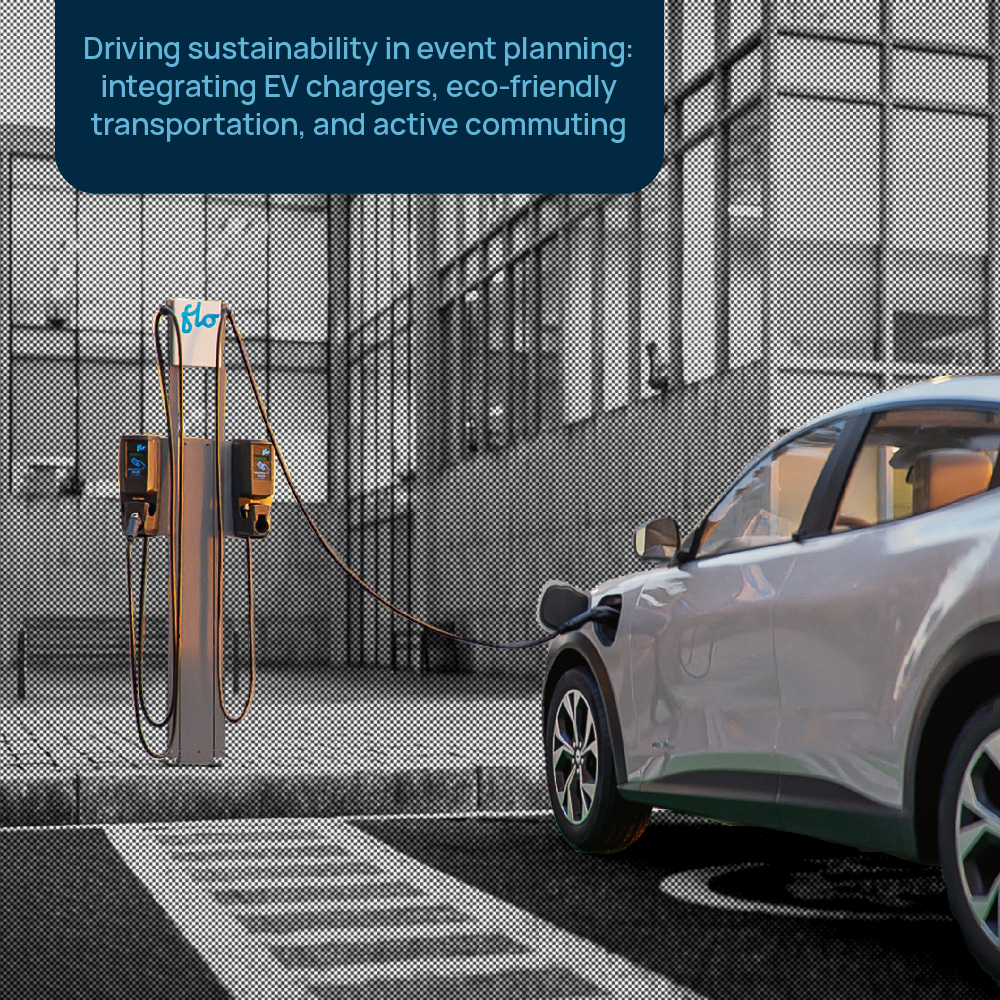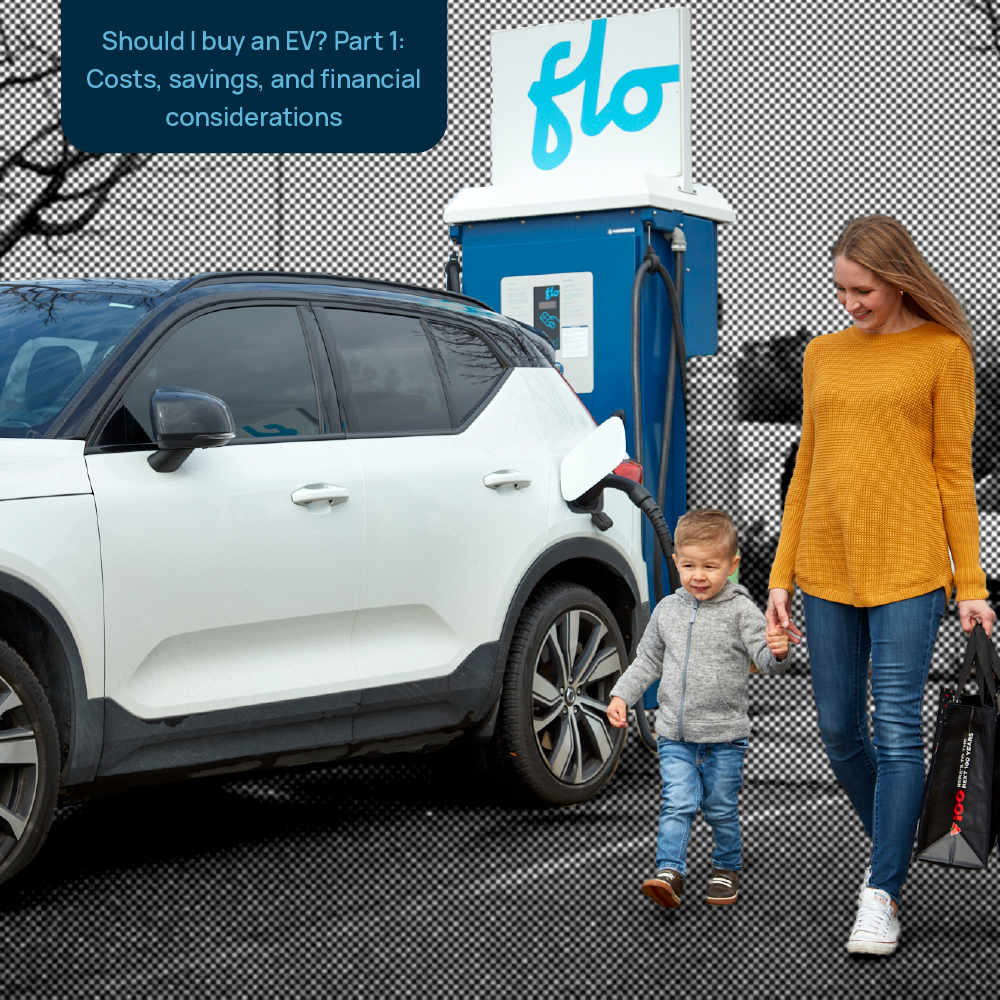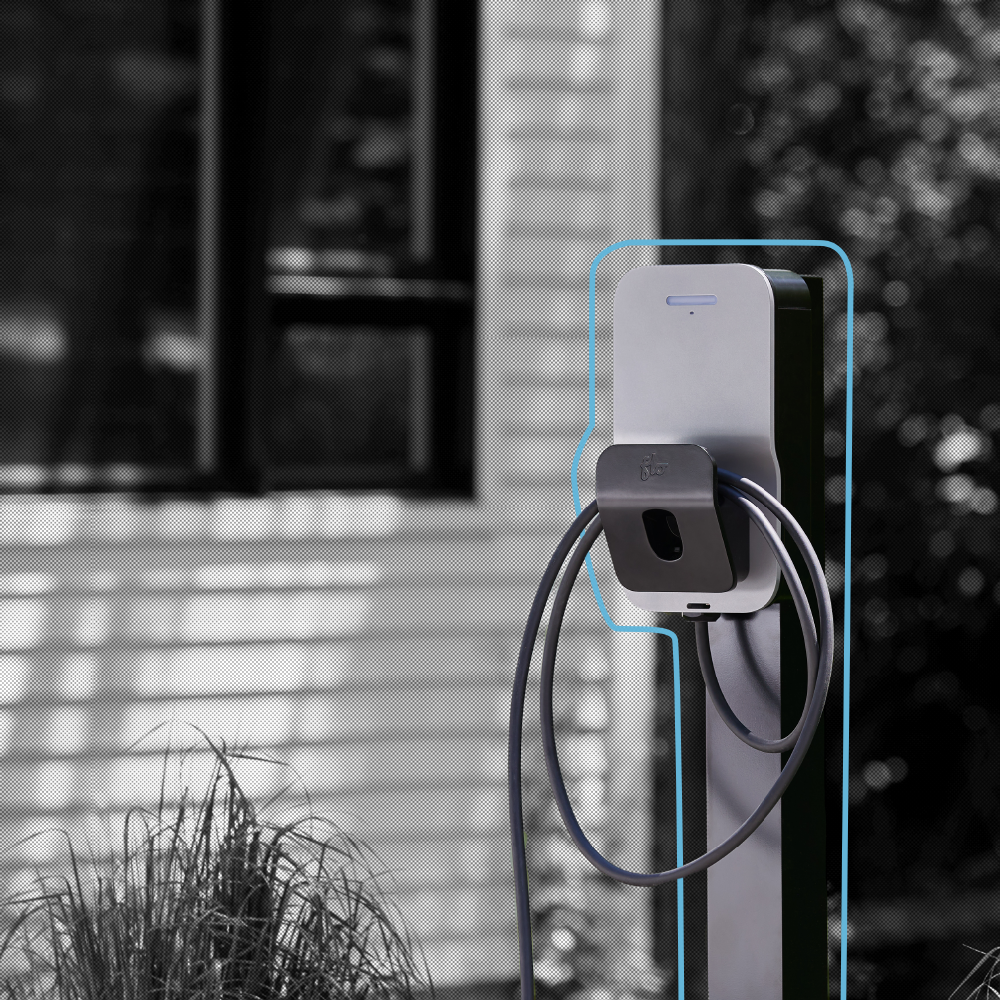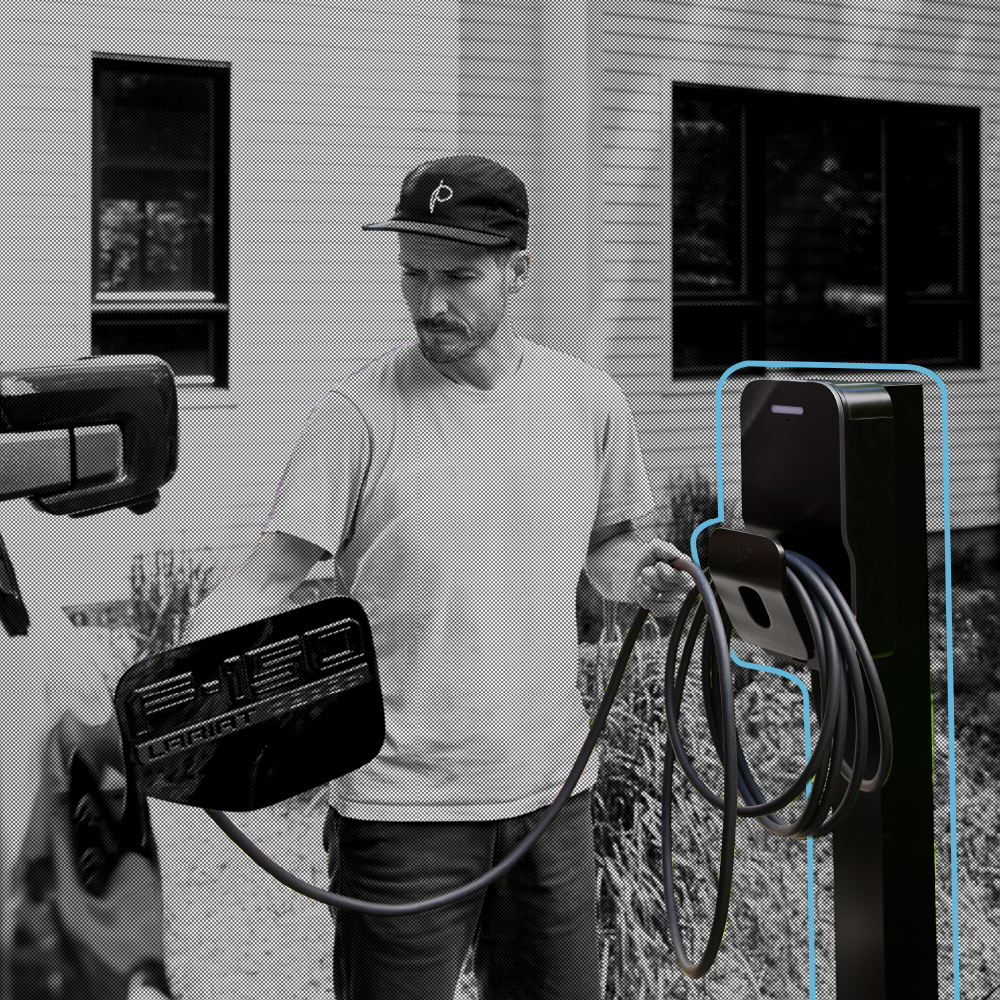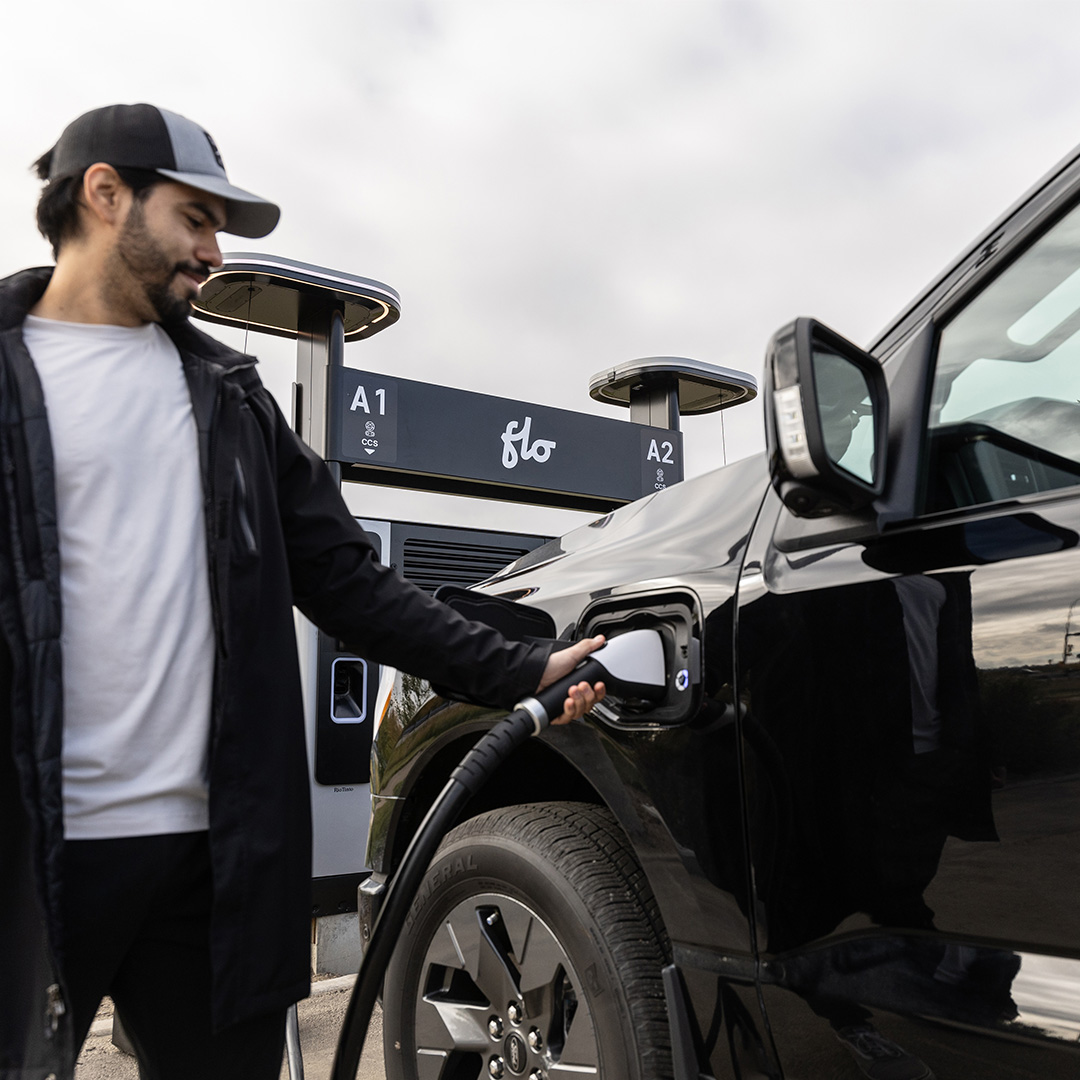If you’ve ever researched EV charging, you’ve probably run into the concept of “Levels” or “types” of chargers. These two terms are used to describe the power output provided by a given unit.
A higher power Level doesn’t necessarily indicate newer-generation technology or a more advanced model of charger. Each Level has its benefits and is useful in different situations – it’s all about understanding which one is best suited to your needs – and that’s what we’ll help you to discover today.
EV charger types
Level 1 EV chargers
Level 1 chargers offer the lowest power output, making them the slowest of the three. To charge your vehicle using a Level 1, simply use the cable that comes with your car coupled with a regular wall outlet – just like you’d plug in your coffee machine or toaster!
These charger types use alternating currents (AC) and have an output of approximately 1.2kW. Depending on the capacity of your car’s battery, it can take longer than one day to fill it up completely: for example, it takes 20 hours to deliver 36kWh, which is equivalent to about 112 miles. In 2022, most new EV models have a range of at least 195 miles.
As EV ranges continue to expand, Level 1 charging will become a less convenient option. That being said, it’s great to keep your plug with you if you’re visiting a more remote location. In the absence of a purpose-built charging station, all you’ll need is a wall outlet to give your EV a boost!
Level 2 EV chargers
Level 2 chargers also use AC, but their power output is higher (typically 6.2 to 7.2, up to even 19.2 kW for some commercial units). This type of charger is the home charger typically recommended for EV drivers, and also offers a great balance between performance, simplicity and cost, for commercial and public use.
Level 2 chargers take up less space and are cheaper to deploy than Level 3 (DC Fast) chargers while still offering an impressive power output. FLO’s Level 2 chargers use a Universal SAE J1772 connector, which is compatible with major North American EV models (either directly or with a connector). This EV charging connector type is different from the ones you’ll find on Level 1 plugs, because they need to accommodate higher power outputs.
There are three different subcategories for this type of charger: residential, private, and public. Many of them offer “connected” features, which is why we call them smart EV chargers.
Level 2 residential chargers
Think of this charger type as an at-home gas station: every day, you can replace the “fuel” you’ve used up, even if it’s just a little bit. You might even have the opportunity to recharge more than once a day, depending on your schedule!
As a rule of thumb, Level 2 chargers will bring your battery to 100% five times faster than Level 1. That means you can plug in your car overnight and have it ready to go by the time you leave for work the next day!
And while driving on a full battery is great for peace of mind, here’s something to consider: on a day-to-day basis, if you are a typical driver, it’s very unlikely that you’ll get anywhere near an empty battery if you’re commuting or running errands around town. That means you’ll usually be topping up your battery instead of charging from 0%, which can take just 2 to 3 hours using a Level 2, depending on factors like the battery capacity of your vehicle.
One of the perks of recharging an EV is that the world doesn’t stop while you charge: it’s juicing back up while it’s not in use, so there’s no need for manual input at all – unlike standing by the pump at the gas station.
Well-built Level 2 home chargers can be installed indoors or outdoors, and some models can even withstand harsh climates. The FLO Home line’s aluminum casing and industrial-grade cables can handle sun, snow, ice, and rain, and are rated for -40F to 122F.
Level 2 private chargers
Commercial models are similar to home chargers, but designed to accommodate more intense use by fleets, companies, and employees. Since they take a few hours to charge a vehicle, they’re best suited for locations where people will spend a chunk of time, like workplaces, retail, or hospitality. Some commercial Level 2 EV chargers have a higher power output than the average, like our CoRe+ MAX charger, at 19.2kW, which can be particularly useful for fleets.
Level 2 chargers can be installed either indoors or outdoors – typically in private parking lots – and can be fixed to walls or pedestals. Some models even offer back-to-back pedestal installation to maximize space, and dual or single pedestals with cable management to prevent damage to cables and reduce tripping hazards.
Commercial chargers may have connected features that enable deployment and scaling while minimizing the need and cost for infrastructure upgrades, such as daisy chaining, power sharing, or power limiting.
Level 2 public chargers
Public Level 2 charging stations are often found in parking lots or directly on the street – in which case we call them curbside chargers. When it comes to public charging, safety of installation, uptime and payment processing are key. Smart, connected stations with proper cable management can minimize tripping risks, report on issues with the station impacting charging and also allow station owners to earn revenue for their charging services.
One of the main things that sets Level 2 curbside EV chargers apart is a design that’s better suited for on-street installation. Some have features that aim to prevent abuse and vandalism – like locked holsters – and create safer environments for drivers and pedestrians – like cable management solutions. Chargers like the FLO SmartTWO-BSR, are also designed to accommodate parallel parking and charging ports located on either side of a car.
Curbside chargers are used to create public networks that offer power for two types of drivers:
- People on the go. Located in neighborhoods where high volumes of people shop, dine, and live, charging stations can even help attract customers to local businesses.
- People who don’t have a charger at home. Public installations offer an equity-promoting solution, making EVs more attainable for people living in multi-family homes or apartments without dedicated parking or practical in-building charging options. They can also support cities’ climate goals by encouraging EV adoption.
Podcast: Are EVs a threat to the grid?
Level 3 fast chargers (a/k/a DCFC or Direct Current Fast Chargers)
The output of a fast charger varies from one model to the next: it can range anywhere from 25kW to 350kW+, which means they can deliver an 80%charge within just a few minutes to 45 minutes, depending on the station, the vehicle and starting state of charge.
Level 3 chargers use direct current (DC) to deliver power quickly, until around 80% of a full charge, at which point the vehicle slows the charge down. Why? The answer is battery protection and safety. Think of your battery like a bucket of water: you can fill it quickly at first, but as you approach the rim, you’ll need to slow down to avoid spilling. In the case of an EV battery, spilling is equivalent to potential damage.
These units cost more to deploy, require more space to install, and, due to their higher output and direct current, need specific electrical infrastructure. The extra effort can be well worth it, though, because they are an essential part of convenient and reliable EV charging networks. Depending on the pricing model, using a fast charger can be more expensive – but they’ll get you back on the road quicker.
You may not have to use fast chargers often, since they’re typically located near major highways, and most drivers choose less expensive Level 2 charging when it’s convenient, such as at home and at work. Level 3s, on the other hand aim to serve the users who need a quick charge, for example because they are driving longer distances. As speeds increase, they are starting to work more like traditional gas stations: show up, refill, and be on your way. Many even have the ability to charge two cars at once! But do yourself a favour and check the capacity of your EV – many models have a power capacity limit, meaning that you could end up paying for speeds your vehicle can’t actually take advantage of.
Some fast chargers are designed to discourage vandalism and withstand very diverse climates – for example, you can find FLO’s EV chargers across North America, from California to Alaska! DC fast chargers, like our SmartDC charging station, are equipped with both CHAdeMO and SAE Combo (CCS1) fast charging connectors, and are compatible with most EV models – including Tesla – with the proper adaptor.
It takes all kinds!
For now, there are three key types of chargers that get us from point A to point B, and there may be even more in the future. Whether you’re an individual or a business, there’s a charger out there that’s designed to fit your needs! If you’re looking for your perfect solution, visit our site for home chargers or contact us about our commercial units.

